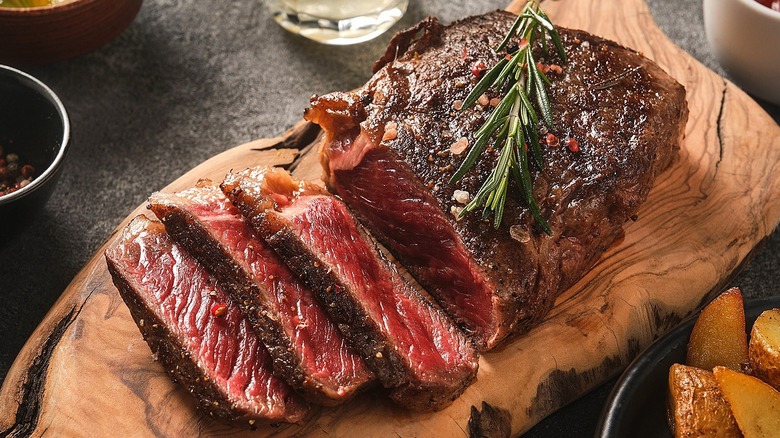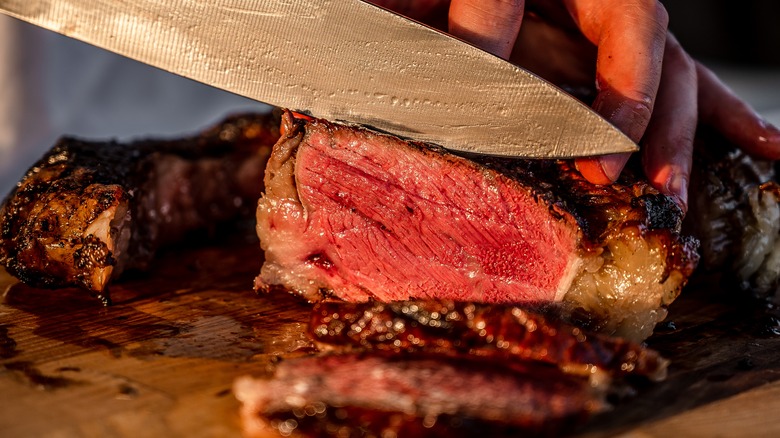Is Color Really A Reliable Method Of Checking Meat Doneness Levels?
Whether you're trying to cook a ribeye to just the right temperature (medium-rare, anyone?), searing a pork tenderloin, or grilling up a few chicken breasts, it's important that your meat is fully cooked before you sit down to eat.
Not only can the proper doneness improve the texture and flavor of your meat — especially where steak is concerned — it can also prevent foodborne illnesses. As the U.S. Department of Agriculture (USDA) cautions, "raw and undercooked meat may contain harmful bacteria."
One of the most popular methods for determining whether or not your meat is done is to simply look at the color. If it's too red or pink, you likely toss it back in the pan or on the grill. And if it's browned or white (in the case of chicken), you might assume it's good to go. But is that really the right way to tell if meat is cooked? Mashed spoke with Meredith Carothers, technical information specialist at the USDA Food Safety and Inspection Service, to find out. Here's what the experts have to say.
Don't rely on color alone
It might be tempting to just peek at the color of your meat to determine whether or not it's ready to eat. But according to USDA technical information specialist Meredith Carothers, that isn't your best (or safest) bet. "Color and texture are not reliable indicators of 'doneness' for meat and poultry," Carothers says. "The use of a food thermometer is the only accurate way to ensure that meat and poultry has reached a safe internal temperature."
While it may seem like an extra step, meat thermometers are often easy to use and only take a few seconds. They'll give you an exact reading of the internal temperature of your meat, as opposed to the color method, which is basically guesswork.
The experts at MasterClass advise sticking the probe of your thermometer into the thickest section of your meat for about 10 seconds to gauge the temperature. Carothers says that the safe temperature for beef, pork, veal, and lamb steaks and chops is 145 F. The safe temperature for ground beef, pork, veal, and lamb is 160 F, and 165 F is the minimum safe temperature for poultry.

